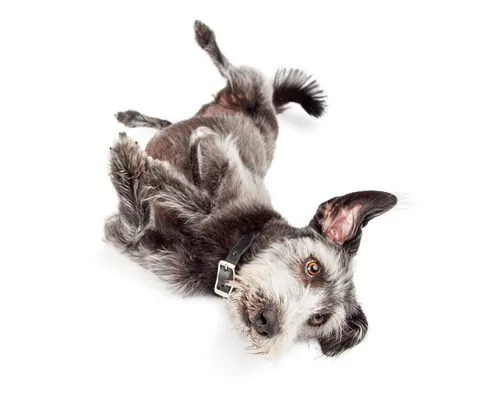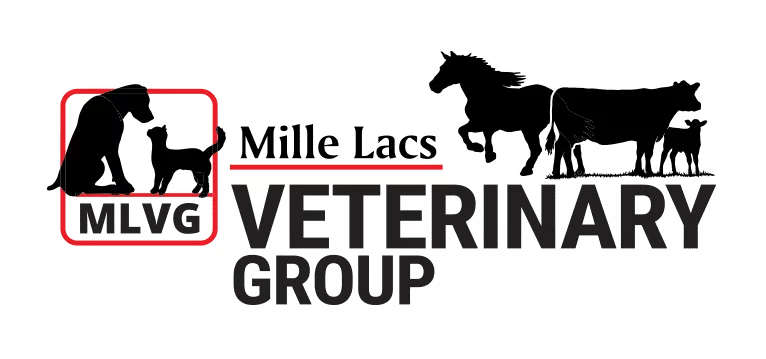Why Do Dogs Roll in Dead Animals?
Dogs have a fascinating array of behaviors, some of which can seem quite puzzling to us. One such behavior is their tendency to roll in dead animals. If you’ve ever wondered why dogs take part in this peculiar behavior, this blog will dive into the reasons behind this behavior, explore its origins, and discuss how pet owners can manage it.

Your Dog’s Instincts Behind Rolling in Dead Animals
Dogs are descendants of wild canids like wolves and foxes. Many of their behaviors, including rolling in dead animals, can be traced back to these wild ancestors. In the wild, rolling in strong-smelling substances, such as dead animals, could serve multiple purposes.
Masking Their Scent
In the wild, predators and prey alike benefit from concealing their presence. By covering themselves with the scent of a dead animal, dogs might have been trying to hide their own smell from potential prey or rivals.
Communicating with the Pack
Rolling in dead animals could be a way for dogs to bring back interesting scents to their pack. This behavior could help inform other pack members about potential food sources or dangers in the area. It’s a way of sharing information through scent, a crucial communication method for canids.
Instinctual Behavior
Dogs have a natural inclination to explore and interact with their environment, and strong, pungent smells are particularly enticing. This behavior could be a simple manifestation of their curiosity and desire to engage with new and interesting scents.
Why This Behavior Persists in Domestic Dogs
Even though domestic dogs have evolved alongside humans and no longer rely on hunting for survival, many of their wild instincts remain intact. These instincts are deeply embedded in their DNA, making behaviors like rolling in dead animals a common occurrence even in pets.
The Role of Genetics
Certain breeds might be more predisposed to rolling in dead animals due to their ancestral lineage. For example, breeds that were historically used for hunting or herding may display stronger instincts related to scent and tracking.
Environmental Influences
Dogs that have more opportunities to roam and explore natural settings might encounter and roll in dead animals more frequently than those kept primarily indoors. The availability of stimuli in their surroundings can trigger these instinctual behaviors.
What Are The Risks with Dogs Rolling in Dead Animals?
Rolling in dead animals poses several risks that pet owners should be aware of. These risks can affect your dog’s health and hygiene, making it important to manage and mitigate this behavior.
- Exposure to Parasites: Dead animals can harbor a variety of parasites, including fleas, ticks, and mites. When a dog rolls in a carcass, they can easily pick up these parasites, leading to infestations. These parasites can cause itching, discomfort, and more serious health issues such as Lyme disease or tapeworm infections.
- Bacterial Infections: Carcasses are breeding grounds for bacteria. When a dog rolls in a dead animal, they can come into contact with harmful bacteria that can cause infections. Common bacterial infections include Salmonella and Clostridium, which can lead to symptoms like vomiting, diarrhea, and lethargy.
- Toxic Substances: Dead animals may have ingested toxic substances before dying, such as rodenticides or other poisons. When a dog rolls in these carcasses, they can absorb these toxins through their skin or accidentally ingest them, leading to poisoning. Symptoms of poisoning can range from mild gastrointestinal upset to severe neurological issues.
- Skin Irritations and Allergies: The decomposing matter on a dead animal can cause skin irritations and allergic reactions in dogs. Chemicals released during decomposition can irritate a dog’s skin, leading to redness, itching, and rashes. Dogs with sensitive skin are particularly at risk.
- Offensive Odors: This can be unpleasant for both the dog and the owner. The strong smell can also make it difficult to clean the dog thoroughly, requiring multiple baths and special shampoos to eliminate the odor.
- Potential for Disease Transmission: Rolling in dead animals can expose dogs to various diseases, including leptospirosis and parvovirus. These diseases can be severe and even life-threatening. Leptospirosis, for example, can cause liver and kidney damage, while parvovirus is highly contagious and can lead to severe gastrointestinal distress.
- Behavioral Reinforcement: Allowing a dog to continue rolling in dead animals without intervention can reinforce this behavior, making it harder to manage over time. Dogs learn through repetition, and if they find rolling in dead animals enjoyable or rewarding, they are likely to continue doing it.
How Pet Owners Can Manage Rolling in Dead Animals
Learn about some strategies to manage and mitigate this behavior in your dog below:
Supervision and Training
Keeping them on a leash or within a secure area can prevent them from encountering dead animals. Training your dog to respond to commands like “leave it” or “come” can also be effective in redirecting their attention away from undesirable objects.
Providing Alternatives
Offering your dog alternative activities and engaging toys can help satisfy their natural instincts without resorting to rolling in dead animals. Interactive toys, scent-based games, and regular exercise can keep your dog mentally and physically stimulated.
Regular Grooming
Frequent baths and brushing can help remove odors and keep your dog’s coat clean and healthy. Using dog-safe shampoos with deodorizing properties can be particularly helpful.
When to Call Mille Lacs Veterinary Group
While rolling in dead animals is generally a harmless behavior, it can sometimes indicate underlying issues that require professional attention. If you notice any other signs, it’s time to contact Mille Lacs Veterinary Group.
Encouraging Positive Outdoor Experiences
Encouraging positive outdoor experiences can help reduce the likelihood of your dog rolling in dead animals.
- Safe Exploration: Allow your dog to explore their environment safely. Providing them with opportunities to sniff and investigate under controlled conditions can satisfy their curiosity without exposing them to harmful substances.
- Building a Strong Bond: Building a strong bond with your dog through positive reinforcement and regular interaction can also help manage their behavior. A well-socialized and well-trained dog is less likely to engage in undesirable activities.
While it can be challenging to manage, there are effective strategies to address this behavior and ensure your dog’s well-being. If you have concerns about your dog’s behavior or need guidance on managing it, call Mille Lacs Veterinary Group today. Our team of experts is here to support you and your furry friend.
